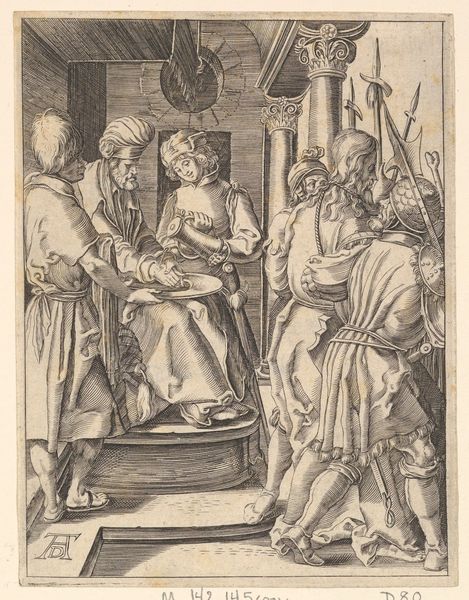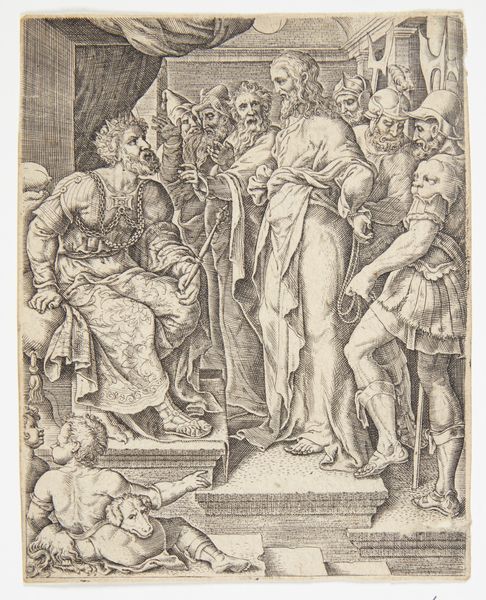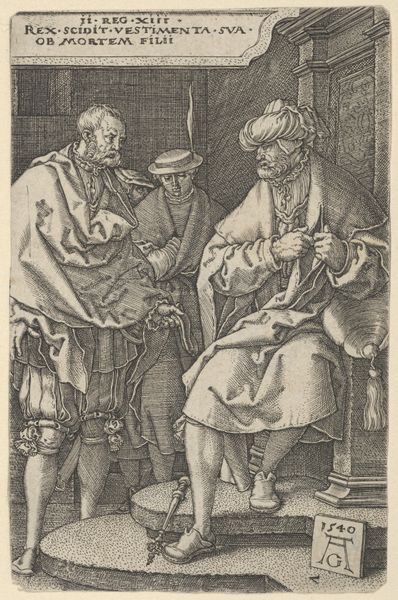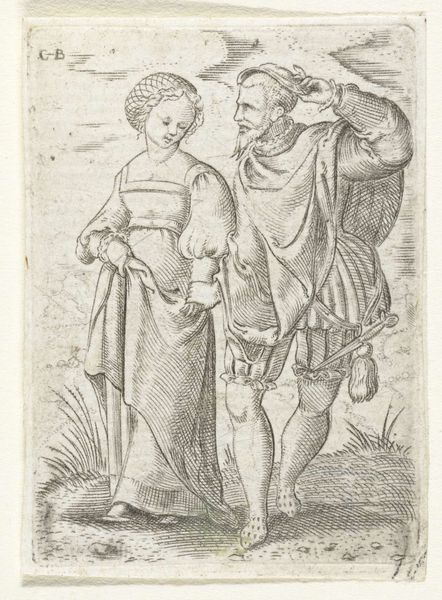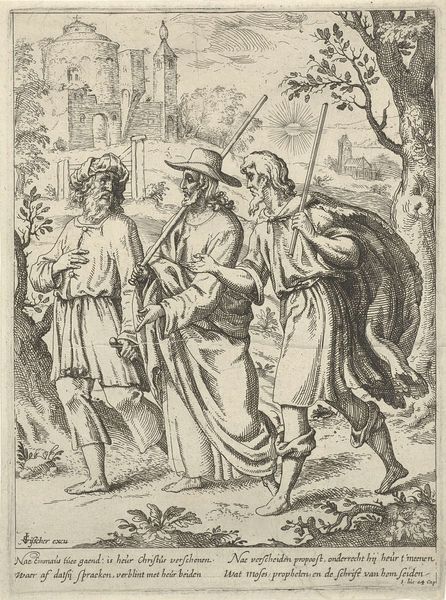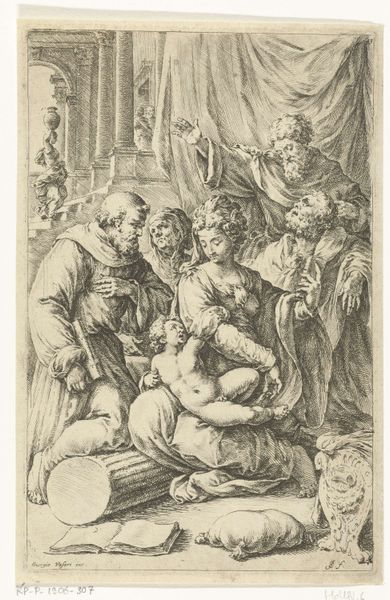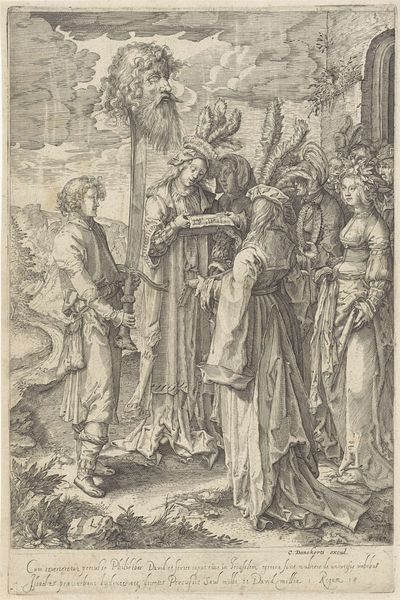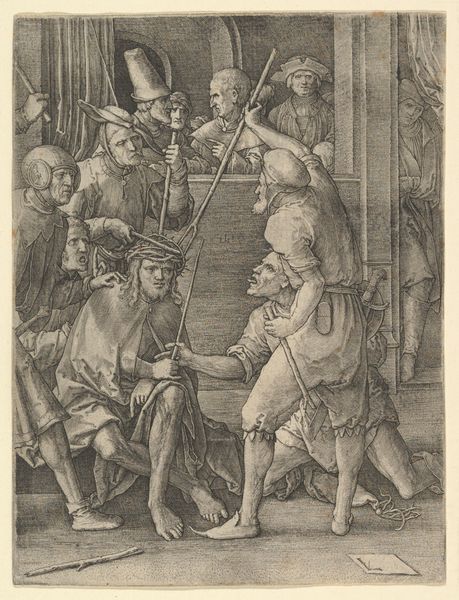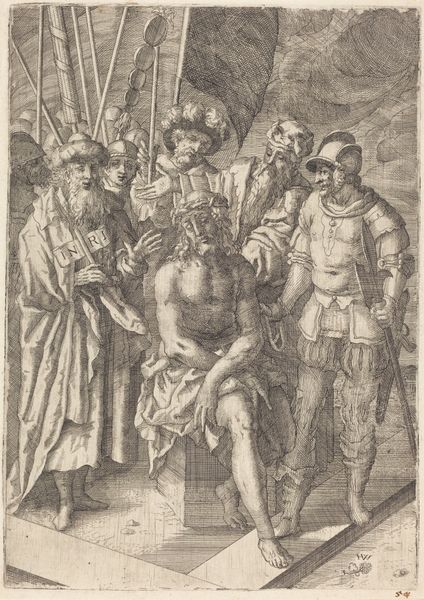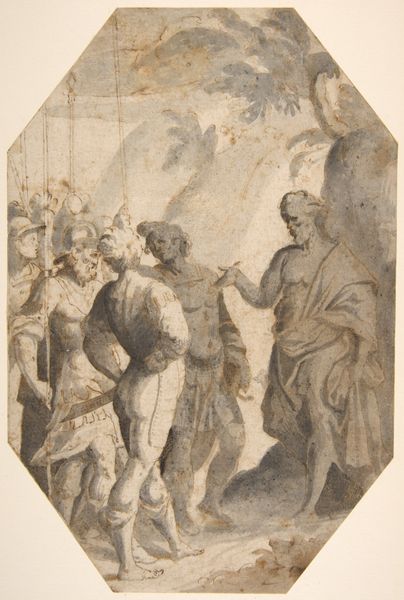
print, engraving
# print
#
figuration
#
history-painting
#
northern-renaissance
#
engraving
Dimensions: height 107 mm, width 85 mm
Copyright: Rijks Museum: Open Domain
Lucas van Leyden etched "The Triumph of David," where David is portrayed as a triumphant hero, holding Goliath's severed head. The head is a visceral symbol of victory, but also evokes the primitive ritual of headhunting, marking the vanquished foe as a trophy. This imagery is not unique; we find echoes in classical antiquity, where victorious warriors displayed the heads of their enemies, and even further back in ancient Celtic traditions. The motif speaks to a primal urge to dominate and memorialize conquest. Consider the laurel wreath worn by the woman playing the triangle. A symbol adopted from ancient Greece and Rome, where it signified victory, honor, and even immortality. The meaning of the laurel wreath has shifted through time, yet its core association with triumph remains strikingly consistent. These symbols, deeply embedded in our collective consciousness, engage viewers on a subconscious level, stirring primal emotions. The image serves as a powerful reminder of how cultural symbols continually resurface, adapt, and acquire new layers of meaning across the epochs.
Comments
No comments
Be the first to comment and join the conversation on the ultimate creative platform.

